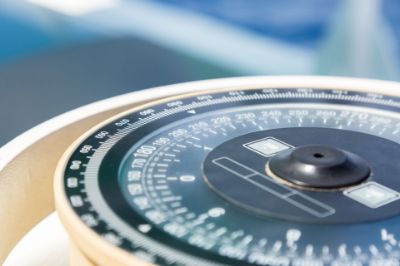Previously, compasses needed to be adjusted with an onboard adjuster. However, RACA has created a new possibility: remote assisted compass adjustment out at sea or after leaving a port. What are the differences and how does this work? Datema Nautical Safety will gladly provide an easy step-by-step guide on how to adjust a compass with RACA.
Step 1 - The remote compass adjustment is needed
A magnetic compass remains an essential navigation instrument on any seagoing vessel, and has to continue operating independently, in the not uncommon event of an electrical failure or electronics malfunction. But this only applies if the compass is regularly adjusted. A ship's compass can deviate because of the many magnetic fields that are present on the ship itself. After using the compass for a prolonged period of time, this deviation might become too large, making the compass less trustworthy. Many ships also use GPS-navigation as a backup navigation system, but the accuracy of the magnetic compass is still extremely important for navigation on the seas. Datema Nautical Safety advises to adjust the compass every two years, after docking or after structural modifications to the ship.
Step 2 - Contact Datema
If you need to perform an adjustment, just contact Datema. That's all! The unique part of RACA is that the compass can be adjusted remotely. There is no need to search for a local adjuster and to have the adjuster come on board to perform the adjustment. The adjustment is performed by the crew of the ship itself with support by Datema. Together we will schedule an appointment for when the adjustment can be performed.
Step 3 - Remote assistance in collecting the needed data
Datema Nautical Safety will provide support in performing the adjustment. When the adjustment is performed for the first time, we will provide extra instructions. A captain has likely been part of an adjustment before. The ship will have to turn on open water (thus 'swinging' the compass), often outside of the port due to the ship's size. As no onboard adjuster is needed, the compass adjustment can be performed on the way to the ship?s destination. RACA can be used while out at sea or after leaving a port.
Step 4 - Using the results
After performing the adjustment and reporting the results, Datema Nautical Safety will forward the new deviation tables if the deviation is less than the 3 degrees limit. These can be used immediately. This way, the journey can continue right after performing the adjustment.
If the deviation exceeds the 3 degrees limit, new deviation tables are not sufficient. The compass itself needs to be adjusted. Datema Nautical Safety will provide remote assistance for performing this adjustment, with matching deviation tables.
Step 5 - Support from Datema
With the adjustment completed, the voyage of the ship can continue. Throughout the journey, Datema Nautical Safety can provide support for using the tables. And if the deadline for adjustment is coming up again, Datema will send a reminder.
Start with RACA now!
RACA is a great, innovative way to perform compass adjustments. It saves time and fuel, and thus costs. It also actively involves the captain and crew in the ship's processes, thus increasing their autonomy on board. Want to know more about this system? Or do you want to start using RACA? Contact our experienced RACA engineers now!


